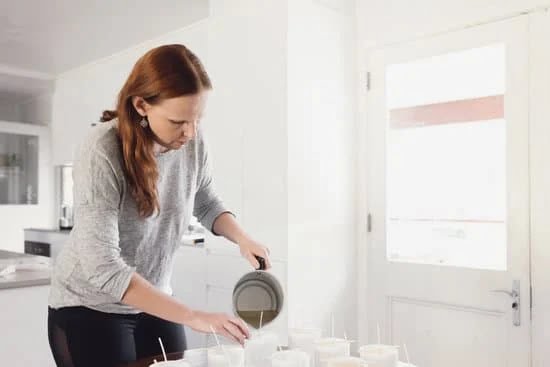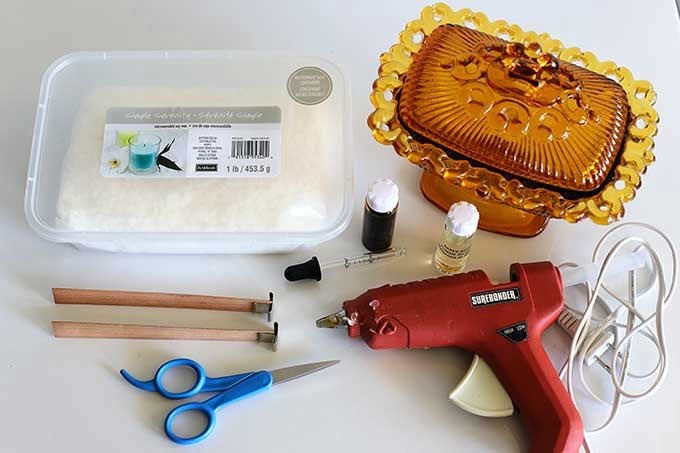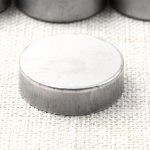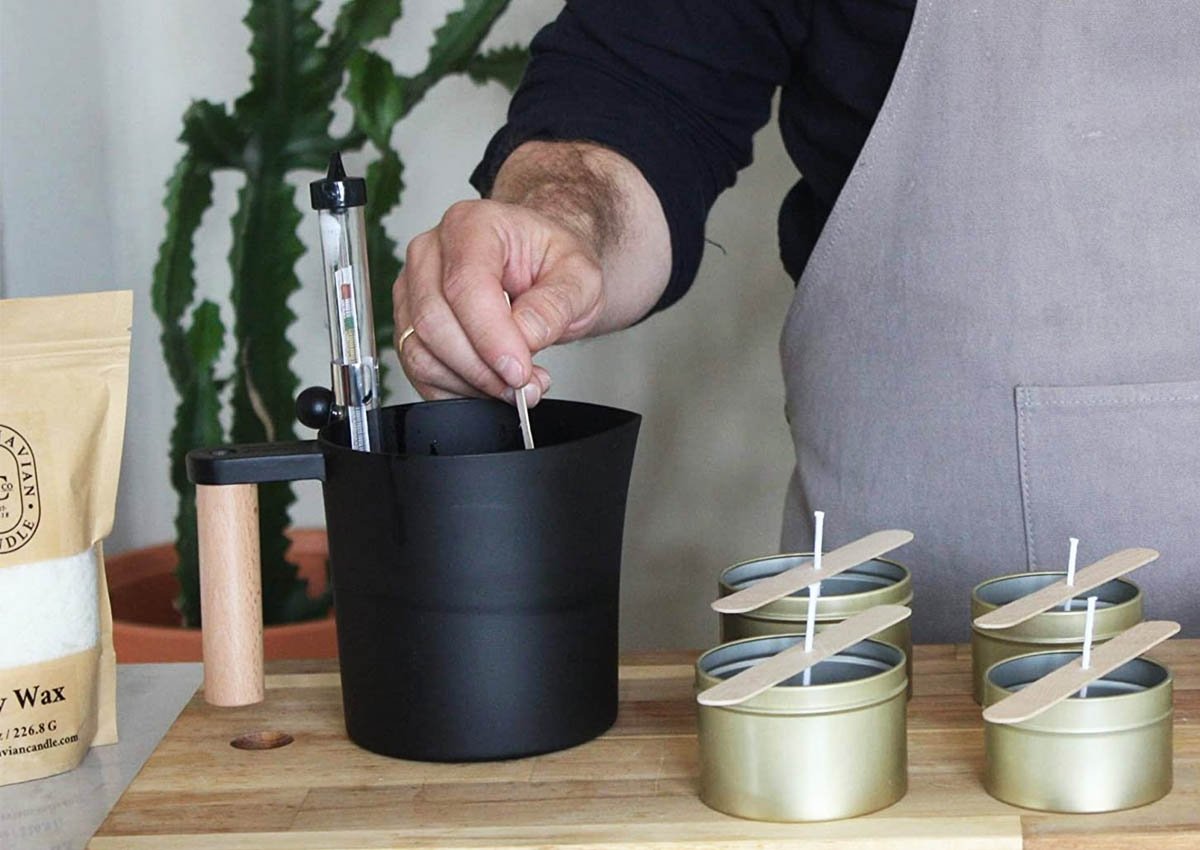The rising popularity of candle making has captivated the interest of DIY enthusiasts, prompting them to explore the art and science behind creating their own unique candles. With an array of customizable options, crafting homemade candles offers individuals the opportunity to express their creativity while enjoying a therapeutic and relaxing experience. However, for those considering delving into this craft, a question arises: does making your own candles cost more than buying pre-made ones?
Candle making has become a beloved pastime for many due to its ability to provide customization and personalization. When creating your own candles, you have complete control over ingredients and fragrances, enabling you to tailor each candle to your desired scent profile and aesthetic preferences. Moreover, the process itself can be meditative and calming, offering a way to unwind and connect with one’s inner creativity.
When it comes to comparing the initial costs of DIY candle making versus buying pre-made candles, several factors come into play. To accurately assess the financial implications, it is essential to break down the costs associated with each option.
Understanding the expenses tied to purchasing raw materials such as wax, wicks, fragrance oils or essential oils, molds or containers allows for an informed decision-making process. By exploring these aspects, individuals can determine if taking on candle making as a hobby aligns with their budgetary constraints and long-term goals.
In this article, we will delve into various aspects surrounding the economic value of DIY candle making compared to buying pre-made candles. Not only will we scrutinize cost breakdowns for both options but also examine key factors that influence overall expenditure in homemade candle production. Additionally, we will investigate long-term savings that can be achieved through creating one’s candles while evaluating the quality differences between store-bought and homemade alternatives.
Moreover, we will explore additional benefits beyond monetary value in choosing DIY candle making as a hobby or even a potential business venture. With all these elements considered together along with personal preferences and priorities, readers will be equipped to make informed decisions when it comes to choosing between making their own candles or buying ready-made ones.
The Advantages of Making Your Own Candles
Making your own candles offers several advantages that make it an appealing option for many individuals. One of the main advantages is the ability to customize and personalize your candles. When you make your own candles, you have full control over the design, color, fragrance, and even shape of the candle.
This allows you to create unique and personalized candles that reflect your individual style and preferences. Whether you prefer simple, minimalist designs or extravagant and decorative candles, making your own gives you the freedom to bring your vision to life.
Another advantage of making your own candles is the control over ingredients and fragrances. Many store-bought candles contain synthetic fragrances and additives that may not be ideal for those who are sensitive or have allergies.
By making your own candles, you can choose natural waxes like soy or beeswax and use essential oils instead of synthetic fragrances. This gives you full control over the quality of ingredients used in your candles, making them a safer and healthier option for yourself and those around you.
Additionally, making your own candles can provide a therapeutic and relaxing experience. The process of melting wax, mixing fragrances, and pouring the melted wax into molds can be a calming activity that helps reduce stress and anxiety. It can also serve as a form of creative expression and self-care. Many candle enthusiasts find joy in experimenting with different scents and combinations, allowing them to unwind and enjoy a sense of accomplishment when they see their finished creations.
Overall, the advantages offered by making your own candles make it an attractive option for those who value customization, control over ingredients, fragrance options, relaxation, and creativity.
| Advantages |
|---|
| Customization and Personalization |
| Control over Ingredients and Fragrances |
| Therapeutic and Relaxing Experience |
Comparing the Initial Costs
When it comes to deciding between making your own candles or buying pre-made ones, one of the crucial factors to consider is the initial cost involved. While making your own candles allows for customization and control over ingredients, it is important to assess whether the investment is worth it financially. In this section, we will compare the cost breakdown of DIY candle making versus buying pre-made candles to help you make an informed decision.
Cost breakdown of DIY candle making
One of the main advantages of making your own candles is that you have control over every aspect of the process, including the choice of wax, fragrance, and containers. However, these choices come with varying costs. The type of wax you choose plays a significant role in determining overall expenses.
For example, soy wax tends to be more affordable compared to other options like beeswax or coconut wax. Additionally, essential oils used for fragrance can be more expensive than synthetic fragrance oils but provide a natural and therapeutic experience.
Furthermore, when considering the cost breakdown for DIY candle making, it is essential to factor in additional supplies such as wicks, dyes (if desired), and any specialized equipment you might need like a double boiler or a thermometer. While these costs might seem daunting at first, they can often be reused for multiple candle-making projects.
Cost breakdown of buying pre-made candles
On the other hand, purchasing pre-made candles eliminates the need for obtaining materials and investing in equipment upfront. The cost varies depending on factors such as brand reputation, candle size, and quality. Although retail prices can vary significantly from one brand to another, it is possible to find high-quality candles at affordable prices.
However, it is important to note that buying store-bought candles may come with limitations in terms of customization options and personalization compared to homemade candles. If unique fragrances or designs are essential to you, this could be a drawback worth considering. Additionally, the cost per candle can add up over time if you frequently burn candles and need to replenish your supply.
By comparing the initial costs of DIY candle making versus buying pre-made candles, individuals can determine which option aligns with their budget and preferences. The decision ultimately depends on factors such as how many candles you plan to make, the desired level of customization, and your financial situation. In the following sections, we will further explore other aspects that affect the overall cost of DIY candle making and assess its value in terms of long-term savings and quality.
Factors Affecting the Overall Cost of DIY Candle Making
When it comes to DIY candle making, there are several factors that can influence the overall cost of this hobby. From the types of wax used to the choice between essential oils and fragrance oils, knowing how these factors affect the cost can help enthusiasts make informed decisions and plan their budgets accordingly.
Types of Wax and Their Costs:
One major factor that affects the cost of DIY candle making is the type of wax used. There are various types of waxes available, including soy wax, beeswax, paraffin wax, and more. Each type has its own advantages and price point.
For example, soy wax is often a popular choice for many candle makers due to its eco-friendly nature and affordability. Beeswax, on the other hand, tends to be more expensive but offers a unique natural scent and luxurious appearance.
Essential Oils vs. Fragrance Oils:
Another consideration when it comes to cost is the choice between using essential oils or fragrance oils for scenting candles. Essential oils are derived from plants and offer a natural fragrance option. However, they tend to be more expensive compared to fragrance oils, which are synthetic fragrances specifically designed for candle making. The choice between these two options depends on personal preferences as well as budget constraints.
Factors Influencing the Cost of Candle Molds and Containers:
The cost of candle molds and containers is another aspect to consider when calculating the overall cost of DIY candle making. The price range for molds can vary greatly depending on factors such as material (silicone or metal), size, complexity of design, and whether they have additional features like easy-release functionality. Similarly, container costs can fluctuate based on materials (glass or tin), size, style, brand reputation, and quantity purchased.
Taking into account these factors can help DIY candle makers understand how different choices in wax type, fragrance, and containers can impact the overall cost of their hobby. By considering these factors alongside personal preferences and long-term goals, candle enthusiasts can make informed decisions that align with their budget and desired outcomes.
| Factors | Cost Impact |
|---|---|
| Types of wax | Varying costs based on type (e.g., soy wax vs. beeswax) |
| Essential oils vs. fragrance oils | Difference in price between natural essential oils and synthetic fragrance oils |
| Candle molds and containers | Varying costs based on material, size, and design complexity |
Long-Term Savings
In addition to the advantages discussed in the previous section, making your own candles can also lead to long-term savings. While there may be some initial costs involved in setting up your candle-making supplies, over time, DIY enthusiasts can save money compared to buying pre-made candles.
Estimating the number of candles produced per batch:
One of the key factors in assessing the long-term savings of DIY candle making is estimating the number of candles that can be produced per batch. This will vary depending on the size and type of molds or containers used. By calculating the cost per candle, DIY enthusiasts can have a better understanding of how their expenses compare to retail candles.
Calculating the cost per candle for DIY enthusiasts:
To calculate the cost per candle, it is important to consider all the materials used in candle making. This includes wax, wicks, fragrances or essential oils, and any additional decorative elements. By dividing the total cost by the number of candles produced, DIY enthusiasts can determine how much each homemade candle costs.
Comparison of costs with retail candles over time:
Once you have calculated the cost per candle for your homemade candles, it is helpful to compare this value with similar retail candles available on the market. This comparison allows you to see whether DIY candle making is actually providing you with savings in the long run. Keep in mind that prices for pre-made candles may vary depending on brands, sizes, and quality.
By assessing these long-term savings aspects of DIY candle making, individuals can make informed decisions about their choice between making their own candles or purchasing them from stores. It’s important to note that while cost may be a significant factor for some people, it is not necessarily a deciding point for everyone.
Other considerations such as personal preferences, priorities, time and effort investment should also be taken into account before choosing between making your own candles or buying them from retailers.
Considering the Quality
Analyzing the quality of store-bought candles
When it comes to assessing the quality of store-bought candles versus homemade ones, there are a few key factors to consider. One advantage of store-bought candles is their wide availability and variety. They often come from established brands with years of experience in candle making, ensuring that they meet certain standards in terms of burn time, fragrance throw, and overall performance.
However, it is important to note that not all retail candles are created equal. While some may offer excellent quality, others may fall short in terms of scent strength or burn time. Additionally, many commercial candles are made using paraffin wax, which can release harmful toxins when burned. This is an important consideration for individuals who prioritize health and environmental concerns.
The potential for higher quality in homemade candles
One of the main advantages of making your own candles is the ability to control the quality of the ingredients used. Many DIY candle makers opt for natural waxes such as soy or beeswax, which are known to produce cleaner burning candles. By choosing premium-quality waxes and carefully selecting fragrance oils or essential oils without any additives or fillers, DIY candle makers have greater control over both the performance and environmental impact of their creations.
Furthermore, homemade candles can be customized to suit individual preferences for fragrance strength and longevity. With proper technique and experimentation, DIY enthusiasts can create candles that have a stronger scent throw and longer burn time compared to store-bought options. This level of customization allows individuals to tailor their candle-making process according to their personal preferences and needs.
Balancing cost and quality for candle enthusiasts
When deciding whether DIY candle making is worth the investment in terms of quality, it is important to weigh both costs and benefits. While homemade candles may require more initial investment in terms of materials and equipment, there is potential for long-term savings once these upfront expenses have been covered. Additionally, DIY enthusiasts can take pride in creating candles that meet their own high standards of quality.
Ultimately, the decision on whether DIY candle making is worth the investment in terms of quality will depend on individual preferences and priorities. For those who value customization, control over ingredients, and the potential for higher-quality candles, making candles at home may be a worthwhile endeavor.
However, individuals who prioritize convenience and variety may find value in purchasing retail candles from reputable brands. By considering both cost and quality factors, candle enthusiasts can make informed decisions that best align with their needs and preferences.
Beyond Monetary Value
While the cost of making your own candles versus buying them is an important factor to consider, there are several additional benefits to DIY candle making that go beyond monetary value. These advantages not only enhance the experience of candle making but also contribute to personal satisfaction and well-being.
Gift-giving opportunities and personalization
One of the greatest joys of DIY candle making is the ability to create personalized gifts for friends, family, and loved ones. By crafting your own candles, you can tailor them to specific preferences and occasions. Whether it’s a unique fragrance combination or a customized label with a heartfelt message, homemade candles make thoughtful and cherished gifts.
Health and environmental considerations
Making your own candles allows you to have control over the ingredients used, reducing the risk of exposing yourself and others to potentially harmful chemicals often found in store-bought candles. By choosing natural waxes like soy or beeswax and opting for essential oils instead of synthetic fragrance oils, you can create healthier and more eco-friendly alternatives.
Building a creative and fulfilling hobby
Candle making is not just about producing functional items; it can also serve as a creative outlet and a fulfilling hobby. The process of melting wax, selecting scents, experimenting with colors, and pouring into molds provides a sense of accomplishment and satisfaction. It offers individuals an opportunity to explore their creativity while enjoying a relaxing and therapeutic activity.
Making Informed Decisions
When deciding whether to make your own candles or buy pre-made ones, it is important to consider several factors before making a decision. Making informed decisions will ensure that you choose the option that best fits your personal preferences, time constraints, and long-term goals.
One of the first factors to consider is your personal preferences and priorities. If you enjoy being creative and want to have complete control over the design, fragrance, and ingredients of your candles, then making your own may be the best choice for you.
On the other hand, if you prefer convenience and have specific scent preferences, buying pre-made candles might be more suitable. Think about what matters most to you when it comes to candles – is it customization or convenience?
Another factor to consider is the time and effort investment required for candle making. DIY candle making can be a fun hobby but it does require time and effort. From gathering materials and equipment to following instructions and allowing for proper cooling times, making candles can be a time-consuming process. If you have limited free time or prefer activities with quicker results, buying pre-made candles may be a better option.
Budget constraints are also an important consideration. While the initial cost of DIY candle making may seem higher due to purchasing materials and equipment upfront, there is potential for long-term savings as discussed in previous sections. Consider your long-term goals – if saving money over time is a priority for you, then investing in candle-making supplies might be worth it.
By carefully considering these factors – personal preferences and priorities, time and effort investment, budget constraints – you can make an informed decision about whether making your own candles or buying them is the better choice for you. Ultimately, there is no right or wrong answer as it depends on individual circumstances and preferences.
Conclusion
In conclusion, when it comes to the question of whether making your own candles costs more than buying them, it ultimately depends on various factors. DIY candle making offers several advantages such as customization, control over ingredients and fragrances, and a therapeutic experience. However, there are initial costs associated with purchasing materials and equipment for candle making.
When comparing the initial costs of DIY candle making versus buying pre-made candles, it is clear that there may be a higher upfront investment for those who choose to make their own. The cost breakdown of DIY candle making includes factors such as types of wax, essential oils or fragrance oils, and the expense of molds and containers. On the other hand, purchasing retail candles eliminates these initial costs.
However, in the long term, DIY candle making can result in significant savings. By estimating the number of candles produced per batch and calculating the cost per candle for DIY enthusiasts, it becomes evident that the cost per candle decreases over time. Comparing these long-term savings with retail candles shows that homemade options can be more economical.
Furthermore, in addition to the financial aspects, there are other benefits to consider when deciding between DIY candle making and purchasing pre-made ones. These include personalization opportunities for gift-giving purposes, health and environmental considerations due to control over ingredients used, and the fulfillment gained from developing a creative hobby.
Ultimately, the decision between making your own candles or buying them depends on personal preferences and priorities. It is crucial to consider one’s time availability, budget constraints, long-term goals regarding sustainability or savings, and even desired quality when weighing these factors.
Making an informed decision allows individuals to find a balance between cost and benefit that aligns with their individual needs. Whether someone chooses to dive into the world of DIY candle making or prefers the convenience of store-bought options will depend on their unique circumstances and desires.
Frequently Asked Questions
Is it expensive to start candle making?
The cost of starting a candle making business can vary depending on various factors. Initially, there will be some upfront expenses such as purchasing equipment like wax melters, thermometers, molds, fragrance oils, and wicks. Additionally, you may need to invest in packaging materials like jars or containers and labels for your candles.
However, it is possible to start small and gradually expand your business as you gain more experience and generate profits. With careful planning and budgeting, starting a candle making venture can be affordable.
How much does it cost to make homemade candles?
The cost of making homemade candles can depend on several factors including the type of wax used, the size of the candles being made, the fragrance oils or essential oils added for scent, and any additional decorative elements. Generally speaking, the main costs involved in candle making are the raw materials such as wax (which can vary in price), wicks, fragrances or essential oils, and containers or molds.
When calculating costs for homemade candles, it is also important to consider indirect expenses like energy usage for heating the wax and melting equipment.
Are homemade candles better than store-bought?
Whether homemade candles are better than store-bought ones is subjective and depends on personal preferences and priorities. Homemade candles often have an artisanal touch that adds uniqueness to each piece. They can be customized with specific scents and designs according to personal taste or occasion. Additionally, homemade candles are typically made with more natural ingredients compared to some mass-produced store-bought options that may contain additives or synthetic fragrances.
On the other hand, store-bought candles offer convenience and variety without requiring time-consuming efforts involved in making them at home. They also undergo rigorous testing to ensure safety standards are met. Ultimately, it comes down to individual preferences in terms of aesthetics, scent choices, affordability, and supporting local artisans versus commercial brands when deciding between homemade or store-bought candles.

Welcome to my candle making blog! In this blog, I will be sharing my tips and tricks for making candles. I will also be sharing some of my favorite recipes.





